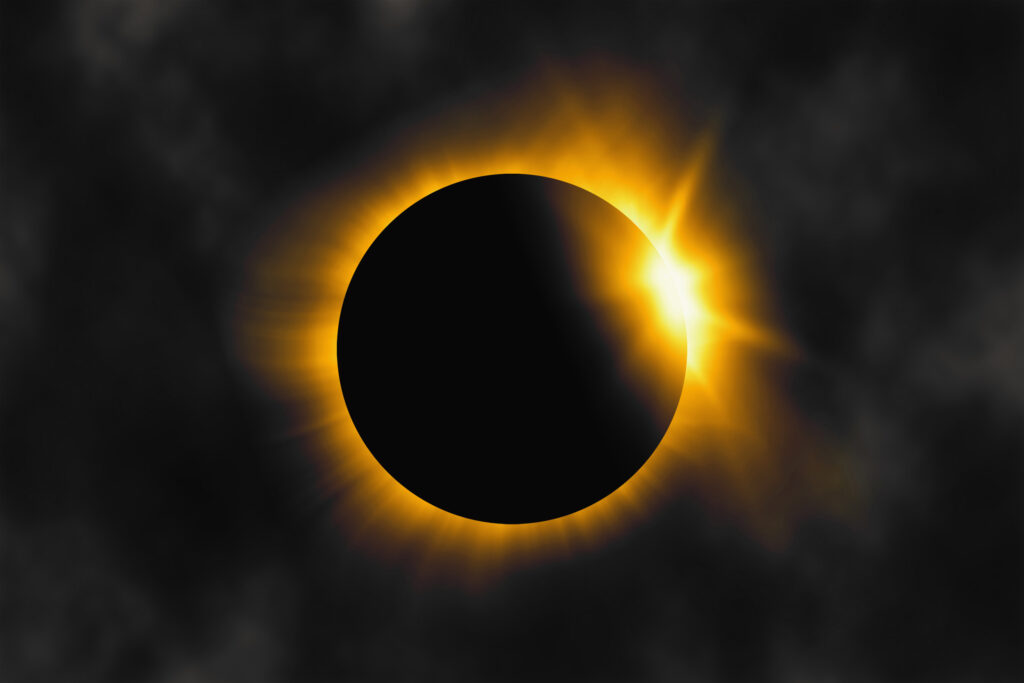Exactly one year from today, Europe will experience its first total solar eclipse in 20 years.
The full eclipse will be visible in parts of Greenland, Iceland, Spain, Russia, and a small area of Portugal; meanwhile, a partial eclipse will occur over much of Europe, Africa, North America, the Atlantic Ocean, Arctic Ocean and Pacific Ocean, NASA said.
“A total solar eclipse occurs when the moon passes directly between the Earth and the sun, casting a shadow on the planet and causing day to turn to night for a few brief moments,” AccuWeather meteorologist and astronomy expert Brian Lada told Newsweek.
To see this spectacular phenomenon, you need to be in the right part of the world at the precise time with the perfect weather.”
A total solar eclipse sees the sun, moon and Earth fall in a direct line, while during a partial solar eclipse, the sun, moon and Earth are not exactly lined up and “the sun will appear to have a dark shadow on only part of its surface,” NASA explains.
Lada added: “Coincidentally, August 12 marks 20 years until the next big total solar eclipse in the United States,” which “will be one of the most impressive of the century.”
How To Watch The Eclipse on August 12, 2026
The total solar eclipse on August 12 next year will be visible in portions of Greenland, Iceland, Spain and the Balearic Islands in the Mediterranean Sea.
Lada said: “People across most of western and northern Europe will be able to see an impressive partial solar eclipse, weather permitting, with the event taking place shortly before sunset.”
“The people who see the total eclipse are in the center of the moon’s shadow when it hits Earth,” NASA explains, noting that “the sky will become very dark, as if it were night.”
“Weather permitting, people in the path of a total solar eclipse can see the sun’s corona, the outer atmosphere of the sun.”
To view the total solar eclipse, you’ll need to be within the 180 mile-wide path of the eclipse, which will begin in northeastern Siberia before passing over the Greenland ice cap.
It will then hit the western edge of Iceland before going over the North Atlantic Ocean to northern Spain, crossing the entire peninsula from the north coast to the Mediterranean Sea, explains the Exploratorium museum in San Francisco.
The total eclipse “will last up to a few minutes, depending on your location,” NASA notes. The path of the total eclipse will begin around 5:02 p.m. UT and reach its greatest eclipse point at about 5:45 p.m. UT, which will last around two minutes and 18 seconds. The path of the eclipse will end at around 6:32 p.m. UT, NASA says.
“You can see the sun and an eclipse with special eclipse or solar viewing glasses. Never look directly at the sun without appropriate eyewear. Regular sunglasses are not safe to view an eclipse,” the space agency warned.
Europe’s First Total Solar Eclipse in 20 Years
The total solar eclipse on August 12, 2026 will mark the first one over continental Europe since March 29, 2006 when a total eclipse was fully visible in Astrakhan in southern Russia.
The August 12 total solar eclipse will be the first one in mainland Europe since August 11 in 1999.
The most recent total solar eclipse took place last year on April 8, when eclipse enthusiasts in the U.S. got to witness a total solar eclipse, the first of its kind in the country since 2017.
The eclipse began over the South Pacific Ocean and passed over Mexico before traveling directly over 13 U.S. states from Texas to Maine. Casting darkness over more than a dozen cities, the eclipse later moved out across the Atlantic coast of Canada.
Lada said that the upcoming 2045 eclipse in the U.S. will be “a coast-to-coast event similar to the one that unfolded in 2017,” lasting over six minutes in some areas, “which is incredibly long as far as solar eclipses go.”
In comparison, the eclipse in 2017 was only two minutes and 40 seconds long, while the one in 2024 was nearly four minutes and 30 seconds long, he said.
“There could be dramatic swings with the weather during the 2045 eclipse due to its duration and the time of year,” Lada noted.
“Since it takes place in the summertime, temperatures could plummet by over 20 degrees in some areas of the country as the moon blocks out the sun. The eclipse will also take place during the Atlantic hurricane season.”
Do you have a tip on a science story that Newsweek should be covering? Do you have a question about eclipses? Let us know via [email protected].
Read the full article here
